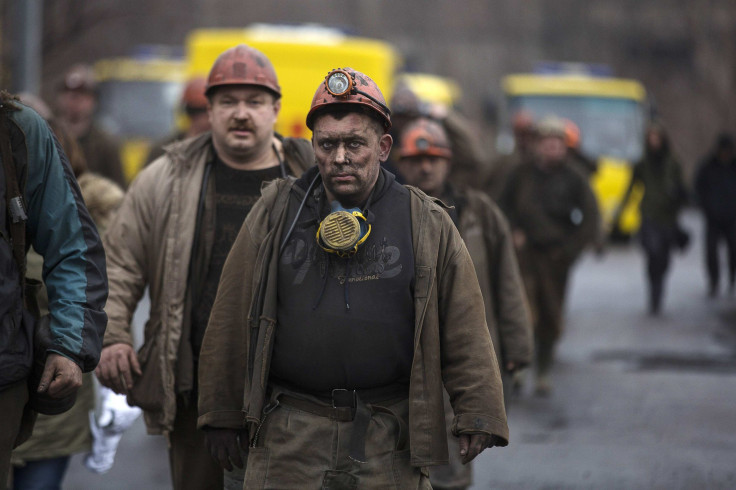Ukraine Coal Mine Explosion: More Than 300 Killed In Zasyadko Incidents Since 1999

The confirmed death toll from Wednesday's explosion at the Zasyadko coal mine in rebel-held territory in Ukraine on Wednesday rose to 17 people, according to Russian newswire RIA Novosti, but dozens more remain trapped and at least 23 more are feared dead. The Zasyadko mine has had seven deadly accidents since 1999 and the 17 confirmed deaths on Wednesday put that collective death toll over 300.
The explosion occurred early Wednesday morning and is suspected to have been caused by a gas leak, a factor also responsible for previous explosions at the mine. Wednesday's explosion may have filled the rest of the mine with deadly gas, which would complicate rescue efforts, said Danny Knott, president of the U.S. Mine Rescue Association.
“Carbon monoxide would be the main gas you need to be worried about after an explosion, then after that you have methane there too,” said Knott. “The mixture in the mine could build up again to an explosive mixture. That’s always a fear during rescue efforts and a reason why you’re always checking what your oxygen content is and monitoring the atmosphere in the mine.”
It is unclear what type of emergency provisions are on hand for the trapped miners, but the mine's poor safety record suggests the regulations that are in place are often violated. The deadliest accident at Zasyadko happened in 2007 when a series of connected methane explosions killed 101 during a two-week period in late November and early December. Five rescue workers were killed and 100 injured because of safety regulation violations during the rescue operation, which led Ukraine’s prosecutor-general’s office to arrest Serhiy Smolanov, the head of the Coal Mining Rescue Service, in 2010.
In the U.S. all miners are required by law to be supplied with a self-contained breathing apparatus with two tanks of air that collectively last about two hours. Each mine in the U.S. is also required to have a refuge chamber where miners can survive for at least 96 hours, Knott said. That is crucial for safety because rescue crews won’t be allowed into a mine if the gas combination is volatile. The 96-hour period gives crews a longer window to mount a rescue effort when the gas mixture reaches a safe level.
The self-declared Donetsk People’s Republic is organizing efforts at the mine, but some fear the rebels do not have the resources to mount a proper rescue operation. Ukrainian President Petro Poroshenko is demanding that state rescue services be allowed access to the mine, but that would require rebel authorities to allow Ukrainian government workers into the heart of their self-declared capital, where they drove off Ukrainian forces in bitter fighting in January.
Prime Minister Arseny Yatsenyuk was more forward. “I publicly address the president of the Russian Federation [Vladimir Putin] to give instructions to these bastards to allow our mine rescue brigades to save the lives of miners,” he said, according to Reuters [watch below].
The predicament is similar to what happened when Malaysia Airlines Flight MH17 was shot down over rebel territory. Rebel authorities refused to allow government authorities near the site of the crash, which the government said was an attempt to cover up evidence of their involvement in the tragedy, which instantly killed 296. A multinational investigation team was eventually allowed access.
But with the lives of dozens of miners on the line, rebel authorities will be under intense local and international pressure to pull off a successful rescue effort. A majority of the locals in the Donetsk region are the miners and refinery workers that power the region’s strong industrial complex and if the DPR cannot mount a proper rescue effort, they could lose the faith of the already war-weary population.
Rain, wet snow and near-freezing temperatures overnight from Wednesday until Thursday will make rescue efforts even harder, according to Accuweather.
© Copyright IBTimes 2024. All rights reserved.





















